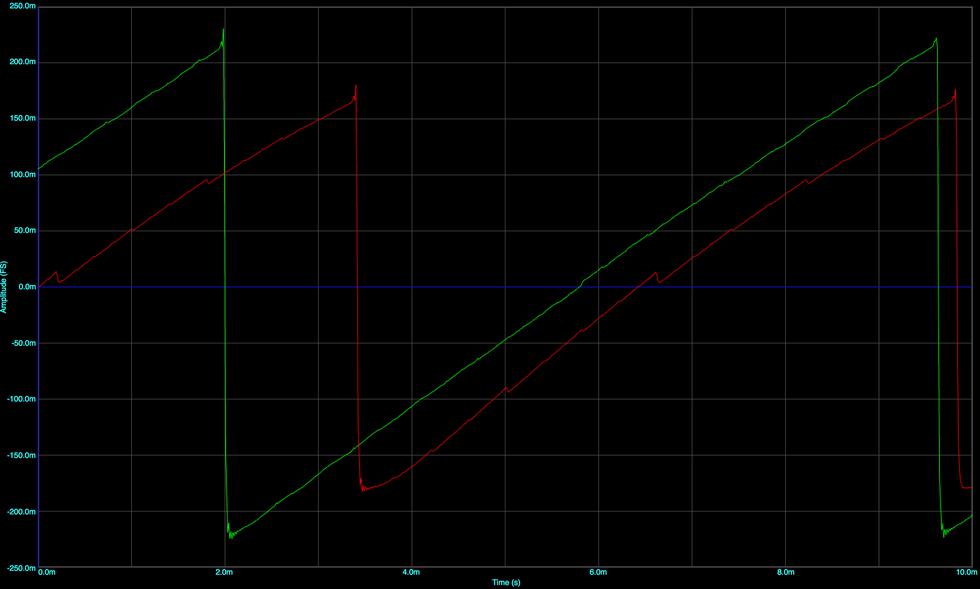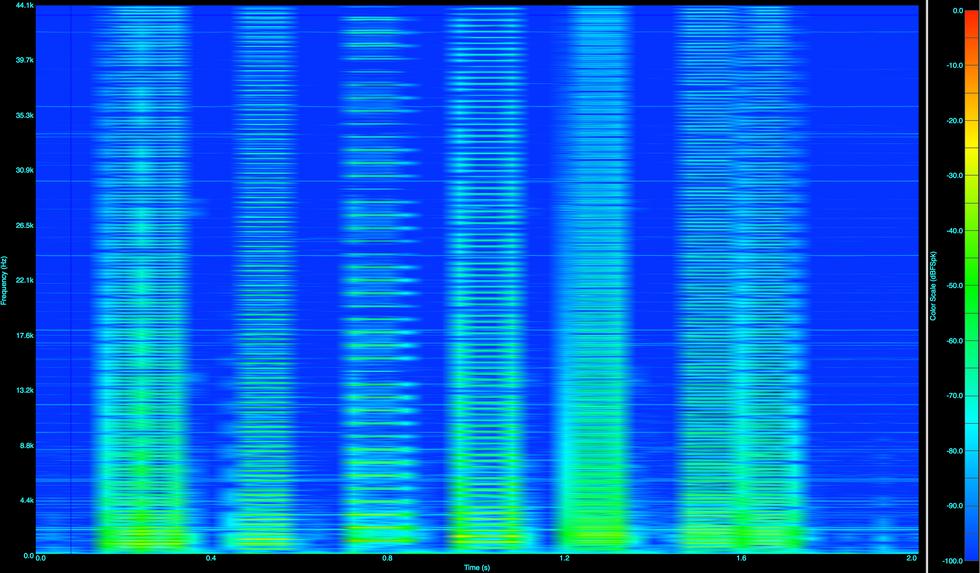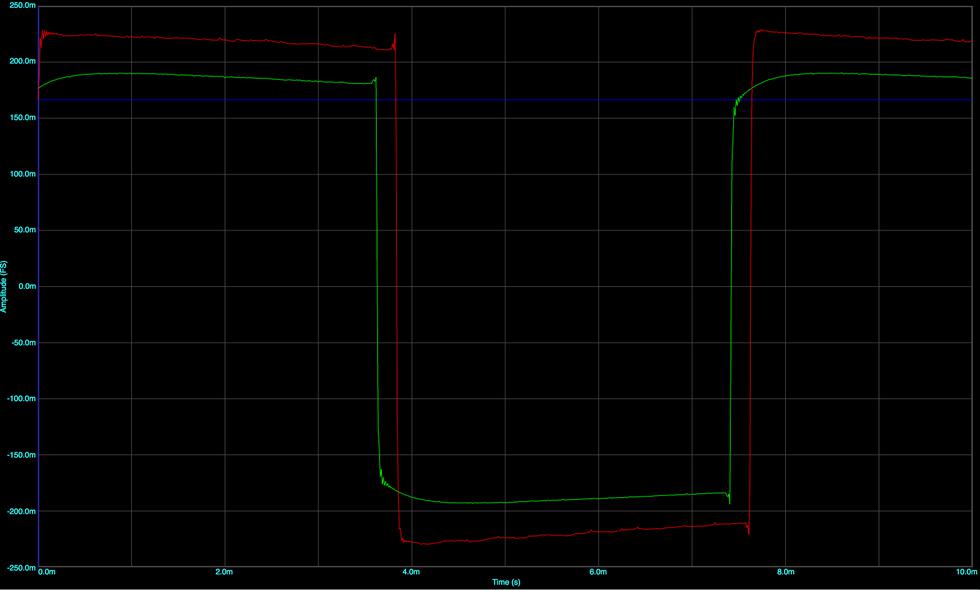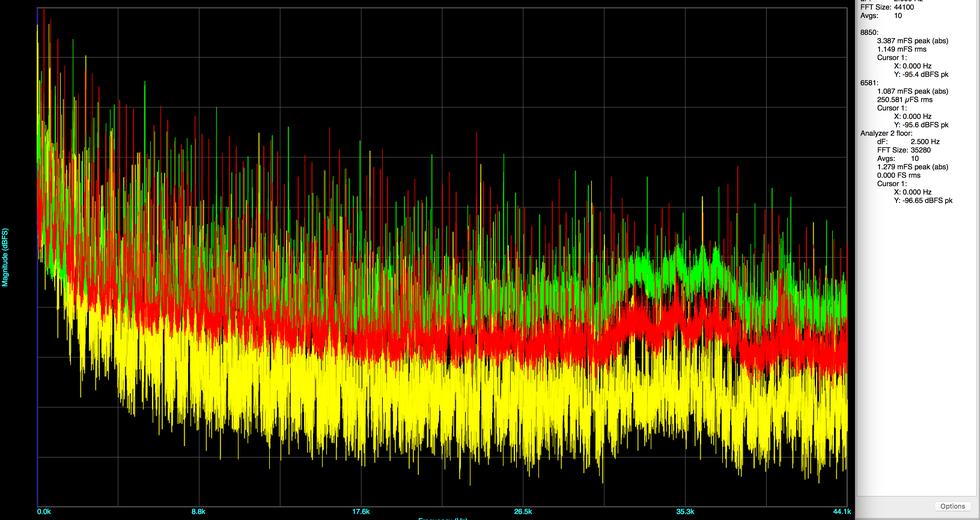THERAPSID MKII EXPERIMENTS
some experiments with the TherapSID MKII SID synthesizer
as this project is still active - this page is still under work
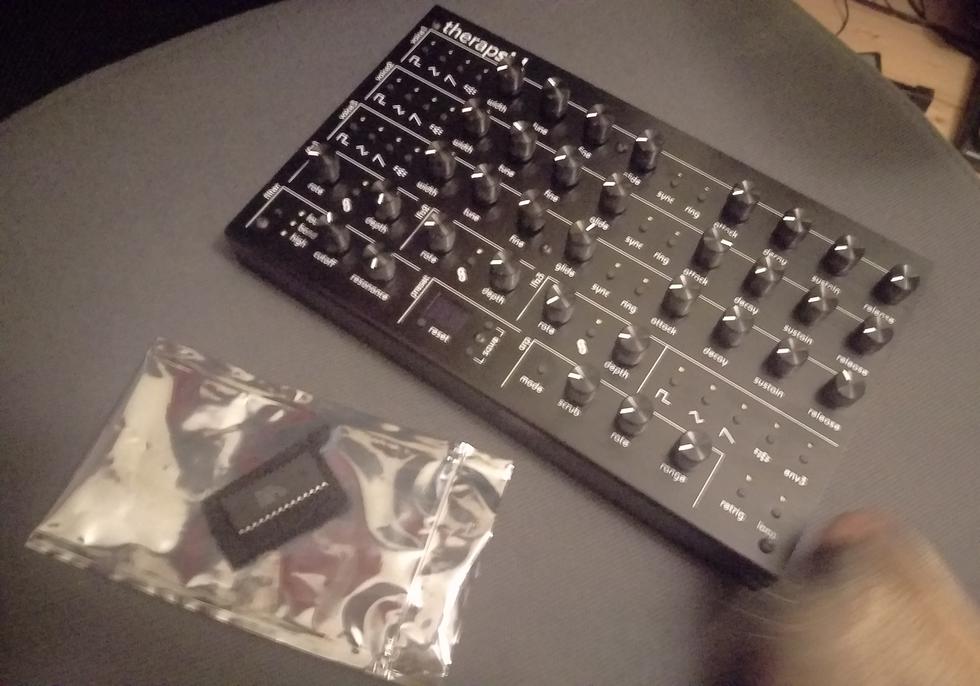
Alex from Twisted Electrons built this rare dual SID synth. The mkII is the 2nd generation release of his known TherapSID synth. Many thanks to him, for his time and his excellent support to me.
for me, he filled my TherapSID with two original SID 8850 which is the "newer" SID variant. this was really nice from him as i just ordered (and paid) it with one SID. the synth was/is - because of the very small market for the original SID chips today - offered without or with one SID.
as documented, the synth allows to run up to two SIDs in parallel / in different modi and these SID could even be mixed by type (as long as the jumpers beside the SID sockets are "jumped" onto the right settings for the correspondig SID.
from earlier projects i still had a SID in my personal "stock", which could not be identified over long time (the print was nearly gone). after trying different lights for reading i've found it is a SID 6581 revision3 - cool. this thing has to go into the TherapSID asap...ß)
my multi-mono / "stereo" setup
the TherapSID offers two audio out - one for each SID. in 4 different run modi it allows different combinations while playing (see manual). i connected both mono out to a "stereo bus" into my setup / DAW and created ableton external hardware objects for:
- SID stereo/multi mono
- SID 8850 mono
- SID 6581 mono
and built a instrument rack / bus template with the two mono objects. this allows me - while playing - to easily switch between the output of the different SID or use them together and spread it in stereo.
my comparisons of (my) SID 6581 and 8850
in between i've fiddeled with both chips for a few weeks now.
the SID 6581 was build in 1985/1986 while his "younger brother" - the 8850 was build around 1989 and 1992. A SID 6481 revision 4 AR was not available for tests.
from the first tone out of the same presets i was nearly "shocked" by the difference of sound, tone, timbre, grunge these both SIDs brought in, while the both initial 8850 sound very similiar to me. i had multiple c64 at their time and worked / played on further from friends and i was never aware of the differences that boxes produced "audio-wise". The analog / hybride SID chip was built into different 8-bit "home computers" (which was "game consoles" for most at that time) and the "sound system" in a time where samples could not be used (lack of memory and cpu power) for making computer music. So they had to be a "multi timbral, polyphone synthesizer". The SID consist of "digital" oscillators - DCO and a analog filter bank plus a few nice features (i.e. ring mod and multi waveform) in 3 "voices". With the two SID in TherapSID up to 6 voices are possible - or one voice with up to 6 "multi"-oscillators (i.e. for "super saw").
comparism SID 8850 vs SID 6581 Rev 3
The differences between the 8850 and 6150 SIDs are significant. Both produce a different timbre from their oscillators, their filters and their noise floor.
sawtooth
a short sawtooth sequence over 2 octaves.
rectangle
a rectangle waveform sequence.
headroom / noise floor
Both SIDs have a different noise floor. The 8850 seems to have the double of noise then the 6581 - but in a different spectrum.
Depending from the application both noise floors are acceptable or even "helpful" to produce analogish 8bit sounds.




